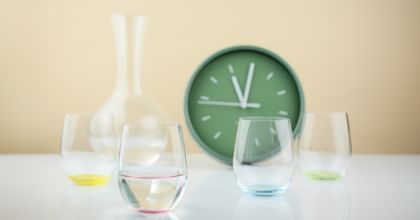Four easy and fun ways to learn about wine!
Fun Ways to Grow Your Wine Knowledge At Home

What do you usually do when you want to learn more about wine? Just because we might not be able to attend wine tasting events or visit vineyards doesn’t mean that we can’t continue to grow our wine education while spending time at home. Here are four easy and fun ways to learn about wine!

Learn Wine Speak
Do you know what tannins feel like on your palate? Can you tell the difference between a wine that has red fruit characters and one that has black fruit? A critical part of basic wine knowledge is learning key terms and what they refer to – and the best way to learn about wine is by drinking it!
Find the tasting notes for your favourite bottles and read into how the winemakers describe them. If they say your rosé has hints of Turkish delight, go looking for this sweet and fragrant component when you drink the wine. Does your favourite winery produce one Chardonnay in steel and one in oak barrels? Compare them side by side to see how ageing and storage changes the wine’s character.

Throw a grape variety party
A great way to discover how region and winemaking technique affects wines is to focus on a single variety of wine. When it comes to regionality, everything from the climate to the vineyard’s soil will have an impact on the flavour and character of the wine. Then, once the fruit has been grown, the winemaker can pick grapes only from a single site or blend grapes from different sites, choose to store or age it in steel or oak barrels, or can choose minimal intervention.
Discover how these choices affect wines by buying multiple bottles of the same variety of wine from diverse regions and using differing winemaking methods. Use the assessment techniques you learned above to compare what fruit you can smell and taste, how tannic the wine is, if the wine is spicy, or green, or floral. You can either do this at home over a few weeks or months, or you can invite friends over, pick a variety and each bring a bottle from a different region for a fun varietal party.

Plan a blind tasting night
Think you know a Shiraz from a Pinot Noir? What about a Sauvignon Blanc from a Riesling? A ‘blind’ wine tasting is a great way to see how well you know one variety from another and is an entertaining way to enjoy wines with your friends. This exercise will ideally work with at least four wines of the same colour, or three wines of each colour, to truly test your knowledge.
Ask each friend to bring a bottle. As host, you can designate a variety to each guest and help by providing hints to guests if they need them. If you’d prefer a more difficult challenge, get each guest to secretly select their wine and bring it already wrapped, covering anything that might give anything away. Provide the same glass for each guest and pour each bottle one by one, trying to guess what each wine is. Use your basic wine knowledge to assess what you smell or taste and make notes. Can you guess the wines correctly? Do you know more about different wine varieties than your friends?

Host a food and wine matching dinner
The basics of food and wine matching relies on matching similar characters: spice with spice, acid with acid, earth with earth, salty with salty. Refer to a wine’s tasting notes to see its description, then think of dishes with a comparable description and have a similar intensity. An aromatic Pinot Gris will pair better with a fragrant piece of fish than a salad dotted with sharp goat’s cheese, just as rich dark chocolate works against a floral Pinot Noir but goes beautifully with a full-bodied Cabernet.
A great way to see how foods work with or against wines is to create a multi-course dinner and match each dish with one wine that works well and one that works poorly. You can tell if a pairing is right because you want to enjoy both elements together as much as possible; you can’t decide whether to take another bite or enjoy another sip. In contrast, a bad match will have you eating first and drinking after; this is why food and wine matching is so important for restaurants: a perfect pairing encourages diners to order another glass!
Standorte







